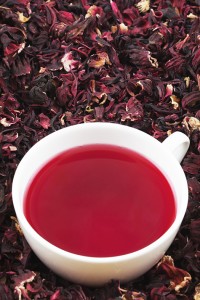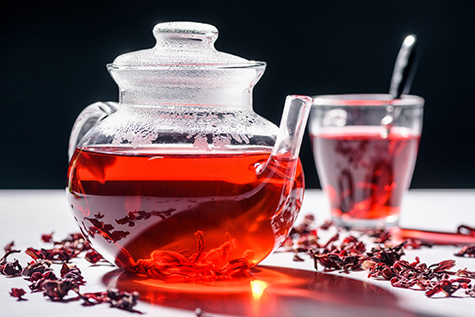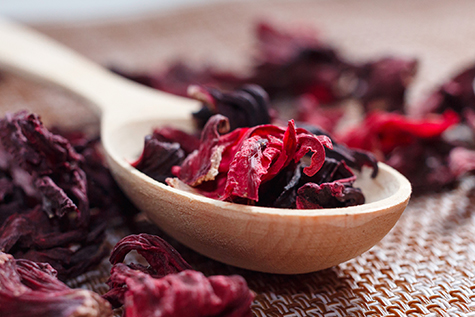The Happy, Healthy Benefits of Hibiscus

You may have noticed food trend hibiscus popping up on local restaurant menus in the past couple of years. From hot and cold tea and infused beverages to being added to salads and even quesadillas and desserts, this beautiful purple edible flower also promises some interesting health benefits. You’ll commonly encounter hibiscus in warmer climates as it is native to Central and West Africa, India and Southeast Asia and the West Indies.
Medicinally, hibiscus is used for:
- cardiovascular disease
- high blood pressure
- high cholesterol
- diabetes
- anxiety
- loss of appetite
- colds and upper respiratory tract infection
- urinary tract infections (UTIs)
- kidney and bladder stones
- stomach mucous membrane inflammation
- circulatory conditions
- cancer
- a gentle laxative and diuretic
- weight loss
- liver health
- promoting breast milk
- anemia
Nutritionally, there are many culinary uses for hibiscus. It is used as both a natural food coloring and flavoring. Parts of the plant are also used to make drinks, jams, spice mixes, soups, and sauces. There are recipes available on how to use hibiscus flowers in enchilada and bread recipes in addition to tea and juice. Any way you incorporate hibiscus as part of the diet is generally safe.
The strongest evidence on the benefits of hibiscus is in the cardiovascular health category. There is evidence that drinking hibiscus tea daily can modestly lower blood pressure after 2-6 weeks. There are also some studies that suggest drinking hibiscus tea may be able to lower total and LDL/bad cholesterol and triglycerides. While this may not be a first-line intervention like changing the diet, weight loss and visiting the doctor, it is a promising natural support to these chronic conditions. There have also been some studies done on people drinking hibiscus tea experiencing a decreased amount of urinary tract infections.
 Research shows that hibiscus does contain antioxidants including anthocyanins, delphinidin and cyanidin which may contribute to come of the potential health benefits. This is one reason why the hibiscus plant has been used in folk medicine for the prevention of disease for years. In research, the red variety of hibiscus exhibited more antioxidant effects than white and both showed a decrease in inflammatory pathways similar to aspirin and ibuprofen.
Research shows that hibiscus does contain antioxidants including anthocyanins, delphinidin and cyanidin which may contribute to come of the potential health benefits. This is one reason why the hibiscus plant has been used in folk medicine for the prevention of disease for years. In research, the red variety of hibiscus exhibited more antioxidant effects than white and both showed a decrease in inflammatory pathways similar to aspirin and ibuprofen.
There is a moderate potential interaction with using hibiscus in supplement/extract form with anti-diabetes or blood pressure lowering drugs. It has a major interaction with chloroquine, a drug used in anti-malaria medications so definitely discuss the use of hibiscus with your doctor if you are on any of these medications. Using it in food or even moderately in tea will likely not be concentrated enough to yield a concern about medication interactions.
 Whether you use hibiscus in a sauce, seasoning, savory dish, dessert or tea this summer, it could be a very healthy food to include. Given the versatility of hibiscus, how will you incorporate it into your diet?
Whether you use hibiscus in a sauce, seasoning, savory dish, dessert or tea this summer, it could be a very healthy food to include. Given the versatility of hibiscus, how will you incorporate it into your diet?
Resources
Christian KR, Nair MG, Jackson JC. Antioxidant and cyclooxygenase inhibitory activity of sorrel (Hibiscus sabdariffa). Journal of Food Composition and Analysis. 2006;19(8):778-83.
Natural Medicines Database. Hibiscus. https://naturalmedicines.therapeuticresearch.com/databases/food,-herbs-supplements/professional.aspx?productid=211. Updated 6/22/2018. Accessed 6/30/17.

